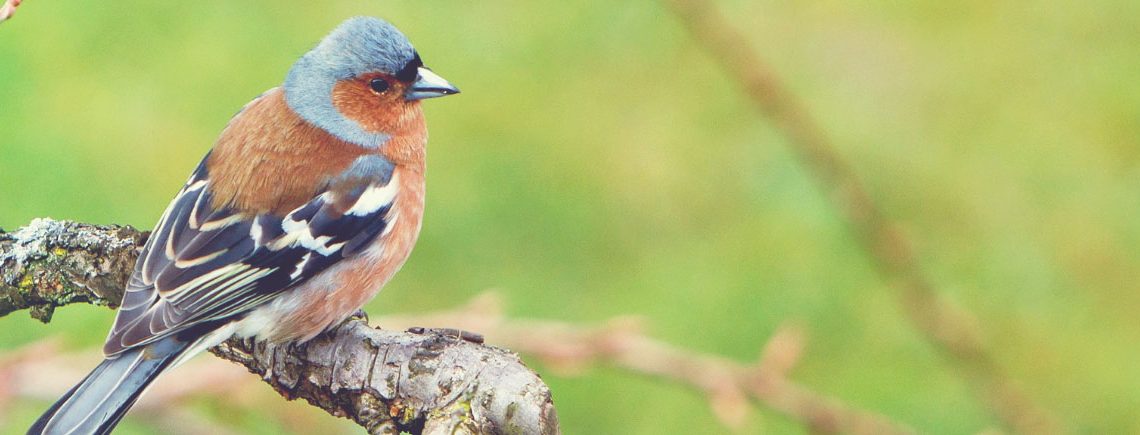The Chaffinch: A Guide to Ireland’s Garden Birds
Known as a ‘Rí Rua’ in Irish, Chaffinches are one of Ireland’s most abundant and widespread species of garden bird. During the winter months, large numbers of chaffinches migrate here from northern Europe, via European countries bordering the south shore of the North Sea. There are estimates that the Irish population are at over 2 million breeding pairs, with a further 5.4 million pairs in Britain. The European population is approximately between 80 million and 96 million breeding pairs.
In this blog post, we’ll guide you through how to spot a chaffinch in your garden, how to feed it, and the best way to care for it.
What Does a Chaffinch Look Like?
The adult chaffinch is approximately 14.5 cm long, with a wingspan of 24.5–28.5 cm, and a weight of 18–29 g. They are a distinctive and attractive bird, with a salmon pink underside and a blueish-grey head and neck. Their upper back is a warm brown, and the lower back is an olive green tone, usually concealed by the bird’s folded wings when perched. Their tail feathers are white on a relatively long, dark tail.
Females and juveniles are much duller and greyer than the male counterparts, but the distinctive white shoulder patches and feathers in the wings and tail when they’re in flight maker both sexes simple to recognise.

What Do Chaffinches Eat?
The Chaffinch’s diet consists of mainly insects such as defoliating caterpillars during the summer months, and a wide variety of plant material like seeds and berries in the winter. They are frequent visitors to bird tables and seed feeders, as well as any food left on the ground. They can often be seen patrolling under bird tables and feeders picking at any scraps dropped by messy feeders above.
They will feed insect larvae and adult insects to their young during breeding season, which are good sources of protein.
How To Feed Chaffinches
Chaffinches can be enticed to your feeders by leaving out seeds, peanuts, mealworms, and suet based feeds. They have a particular liking for sunflower hearts.
They are known for being quite shy birds, so try place feeding spots and enclosed feeders in sheltered areas like near or under the cover of a tall tree, so they can dart in and out to retrieve some food. Higher bird tables and feeders have better rates of success when attracting chaffinches to your garden as they are less vulnerable to predators like cats and pigeons.
Where Do Chaffinches Nest?
Chaffinches nest in a wide variety of locations such as in woodlands, parks, gardens, fields, scrub and hedgerows. They will create a nest of moss and dried grass which can be found at the end of tree branches.
Male chaffinches will begin to defend their breeding areas sometime in February, but will not begin to build the nest until at least April. The female that is dominant in the summer, with the male keeping his distance when he accompanies her around the breeding territory.
What Do Chaffinches Sound Like?
The Chaffinches’ song consists of a bubbly string of notes, starting high and plunging throughout, finishing with a flourish resembling a wolf whistle. It is loud, and males often sing two or three different song types, repeating many times.

